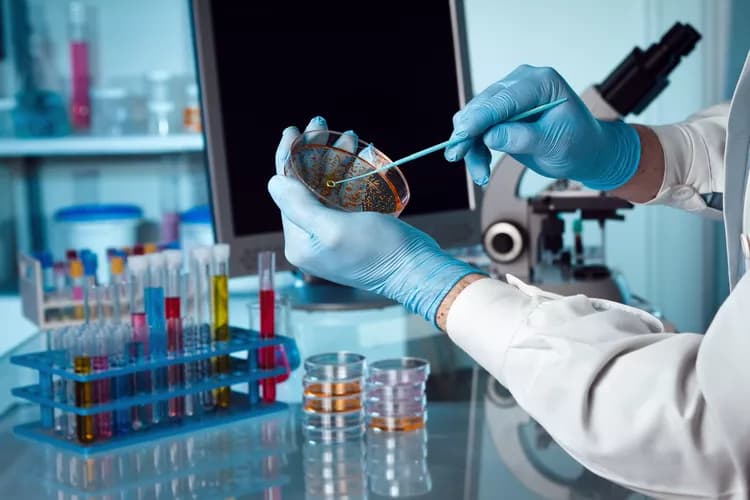What are the other Names for this Test? (Equivalent Terms)
- ACR Blood Test
- Microalbumin/Creatinine Ratio Panel
- UACR Blood Test
What is Urine Microalbumin to Creatinine Ratio Test? (Background Information)
- Microalbumin refers to concentrations of albumin in the urine that are abnormal, but undetectable by traditional methods
- Albumin is a protein made by the liver in large quantities. It circulates in blood, where it acts as a transport vehicle for various substances including water, fatty acids, and drugs. Albumin is the most abundant protein found in blood
- The kidneys, along with the liver and spleen, filter blood and excrete waste as urine. The site of filtration is a microscopic sieve-like structure called the glomerulus. There are roughly 1 million glomeruli in each kidney
- Normally, only ions and small molecules can pass through the glomerulus and make it to the filtrate and subsequently into urine. Typically, no proteins are present in urine
- However, when the glomeruli of the kidneys are damaged, they let through proteins and other substances. Thus, the presence of proteins, such as albumin in the urine, suggests kidney disease, or nephropathy. It often accompanies diabetes
- Proteinuria, the term for proteins appearing in urine, also occurs with strenuous exercise. The mechanisms for this are unclear, but may involve hormonal and central nervous system stimulation leading to increased glomerular permeability
- Microalbuminuria, or the presence of trace amounts of albumin in the urine, precedes significant nephropathy. It can be used as warning sign for nephropathy, 5-7 years before serious damage occurs
- Creatinine is formed when a high-energy compound called creatine is expended by muscles to fuel their contraction. It is the end product of creatine metabolism. After creatine is used up, the creatinine that is produced, travels through blood and exits through the kidneys
- The rate of creatinine formation depends on an individual’s muscle mass. Aside from this, creatinine formation rate is fairly constant during normal conditions. This makes it a useful indicator for muscle and kidney disorders
- Creatinine levels usually decrease with age because of age-dependent decreases in muscle mass. Damage to muscles resulting from injury or degenerative diseases causes the release of creatinine in blood. This leads to a spike in the normally constant blood creatinine levels
- Both microalbumin and creatinine are useful indicators for monitoring and assessing chronic diseases such as diabetes. These measurements can be combined into a microalbumin/creatinine ratio to more accurately determine any kidney filtering deficiencies
- Measuring creatinine provides a baseline for how much normally escapes the kidneys’ filtering ability. Dividing the microalbumin measurement by this baseline value provides a more accurate assessment of how much creatinine is escaping filtration
- The microalbumin/creatinine ratio panel of urine tests helps determine the microalbumin/creatinine ratio from calculations involving the separate values. It is used to monitor and assess chronic conditions such as diabetes
What are the Clinical Indications for performing the Urine Microalbumin to Creatinine Ratio Test?
Following are the clinical indications for performing tests to determine the Urine Microalbumin to Creatinine Ratio:
- As part of a comprehensive or basic metabolic panel of tests
- Monitoring treatment for kidney disease
- Muscle weakening
- Fatigue
- Recent trauma
- Frequent urination, increased thirst
- Blurry vision
- Rapid weight loss
- High blood pressure
- Mid-back pain
- Tingling and numbing in the extremities
- Obesity
- History of cardiovascular disease
- History of degenerative muscle disease
- Individuals with type 1 diabetes and type 2 diabetes
- Family history of chronic kidney disease
- Individuals who are at an increased risk for cardiovascular disease
How is the Specimen Collected for Urine Microalbumin to Creatinine Ratio Test?
Following is the specimen collection process for Urine Microalbumin to Creatinine Ratio urine test:
Sample required: Urine
Process: Collection of a random urine sample into a sterile container.
Preparation required - the urine sample should not be collected under the following circumstances:
- After exercise and physical exertion
- If one has currently or in the recent past been diagnosed with urinary tract infection
- Currently having acute illness
- After intravenous fluid therapy
- Immediately after a major surgery
What is the Significance of the Urine Microalbumin to Creatinine Ratio Test Result?
- If the individual has an Urine Microalbumin to Creatinine Ratio less than 30 (mg/g), then he/she is considered to be at a low risk
- If the individual has an Urine Microalbumin to Creatinine Ratio over 30 (mg/g), then he/she is considered to be at a high risk
The laboratory test results are NOT to be interpreted as results of a "stand-alone" test. The test results have to be interpreted after correlating with suitable clinical findings and additional supplemental tests/information. Your healthcare providers will explain the meaning of your tests results, based on the overall clinical scenario.
Additional and Relevant Useful Information:
- Certain factors influence the results of this urine test and these include hydration status, age, pregnancy, body size and composition, and diet
Certain medications that you may be currently taking may influence the outcome of the test. Hence, it is important to inform your healthcare provider of the complete list of medications (including any herbal supplements) you are currently taking. This will help the healthcare provider interpret your test results more accurately and avoid unnecessary chances of a misdiagnosis.
Please visit our Laboratory Procedures Center for more physician-approved health information:
http://www.dovemed.com/common-procedures/procedures-laboratory/
Related Articles
Test Your Knowledge
Asked by users
Related Centers
Related Specialties
Related Physicians
Related Procedures
Related Resources
Join DoveHubs
and connect with fellow professionals


0 Comments
Please log in to post a comment.